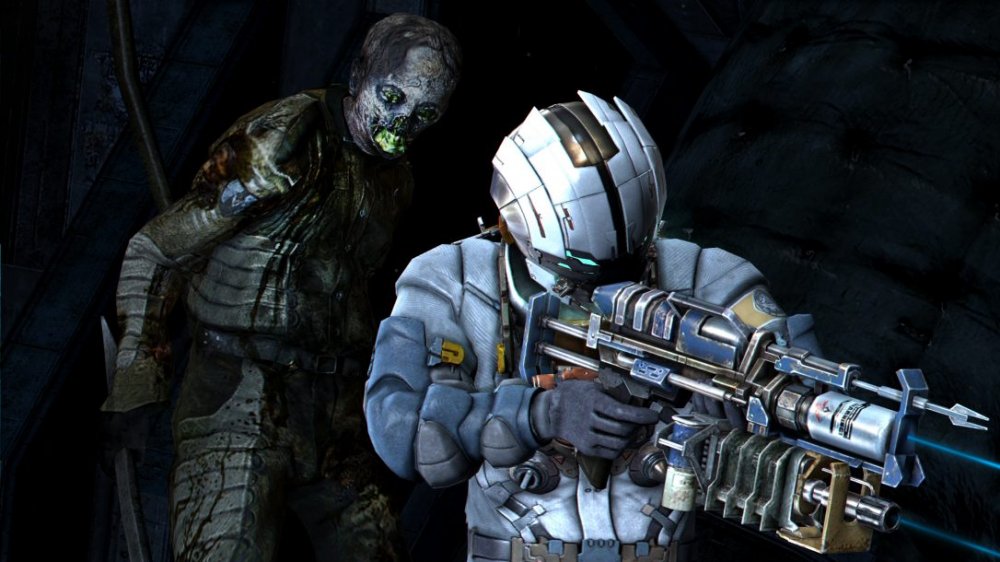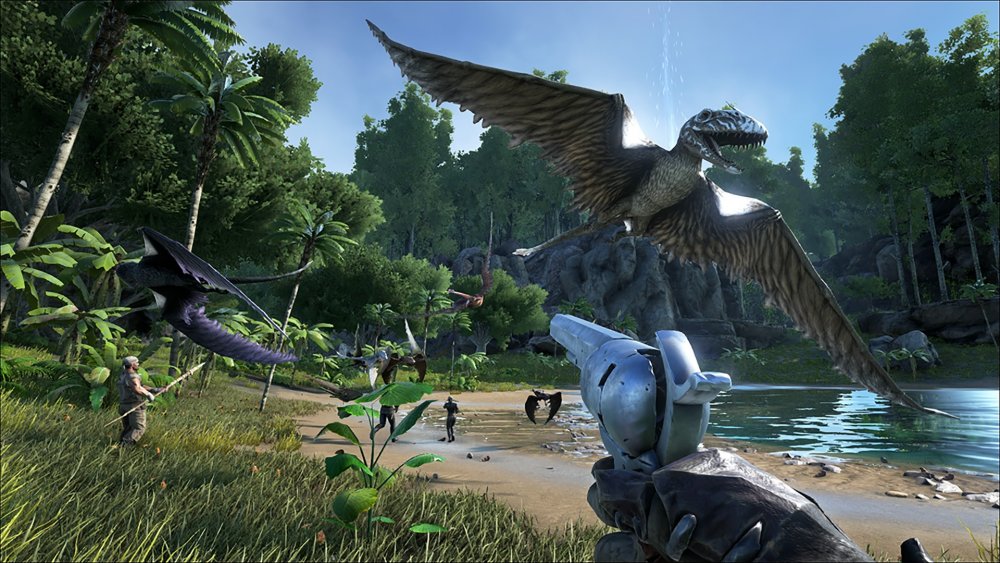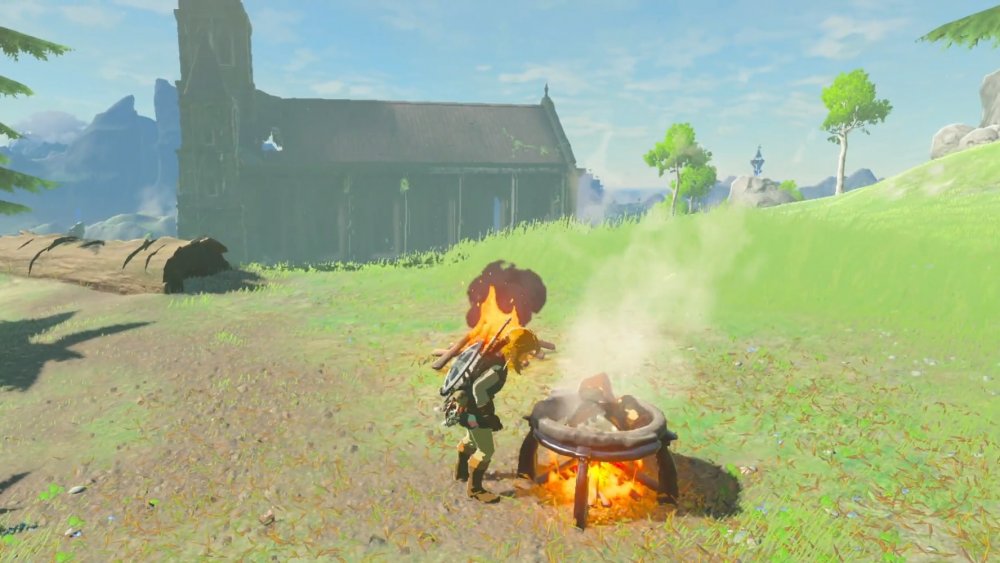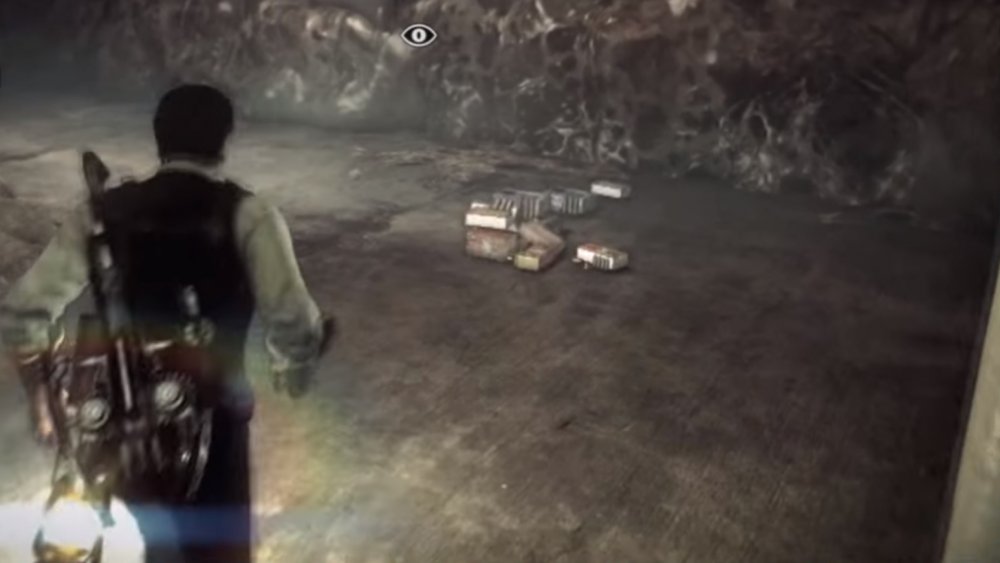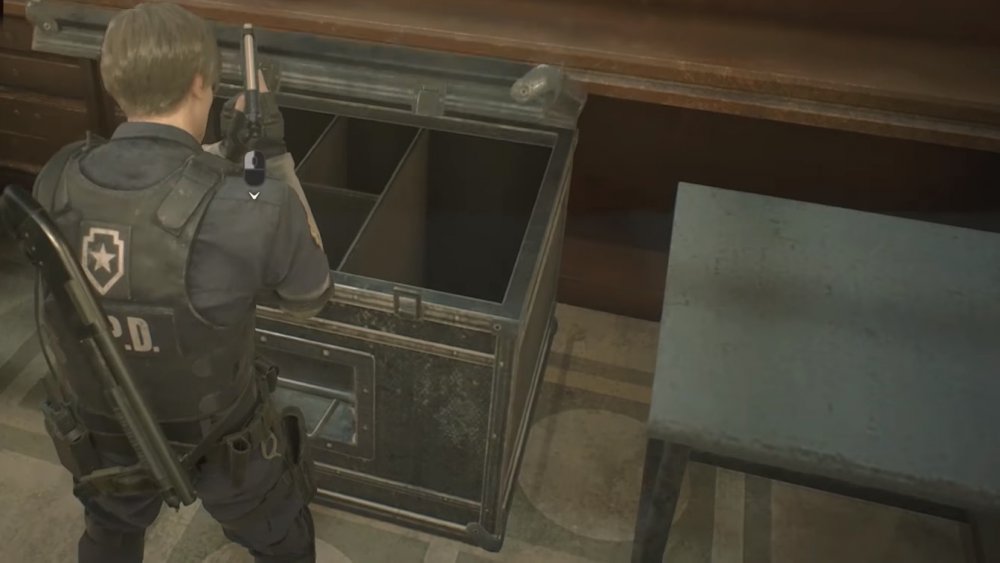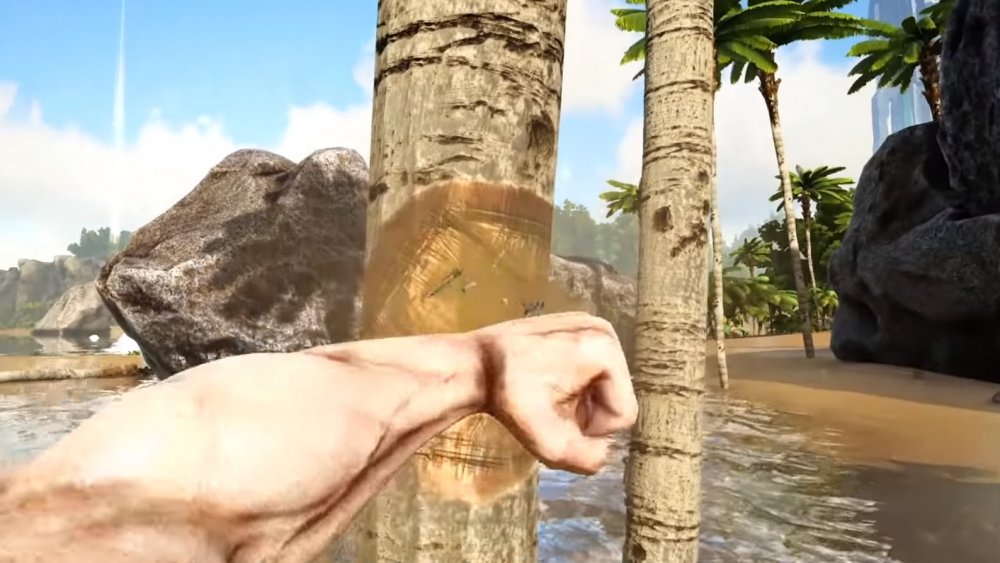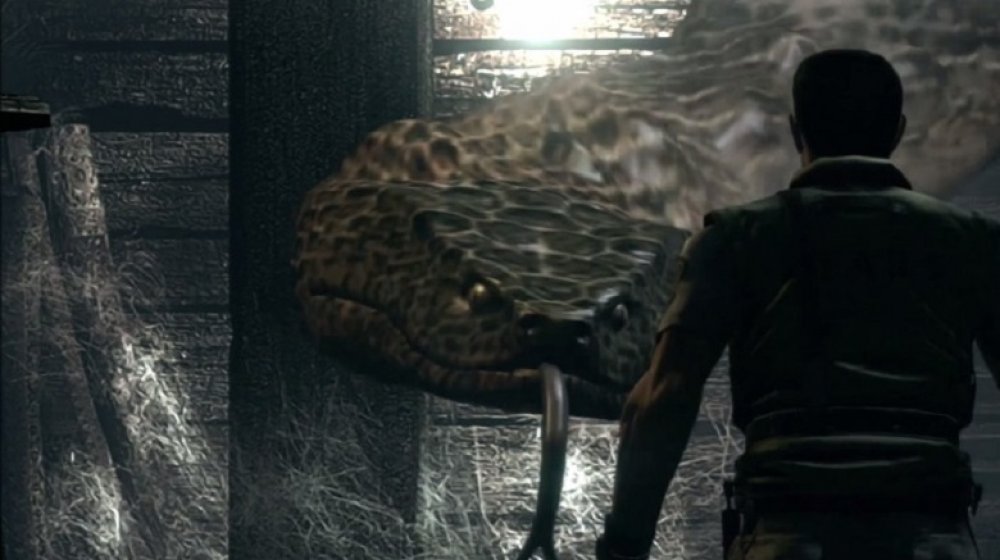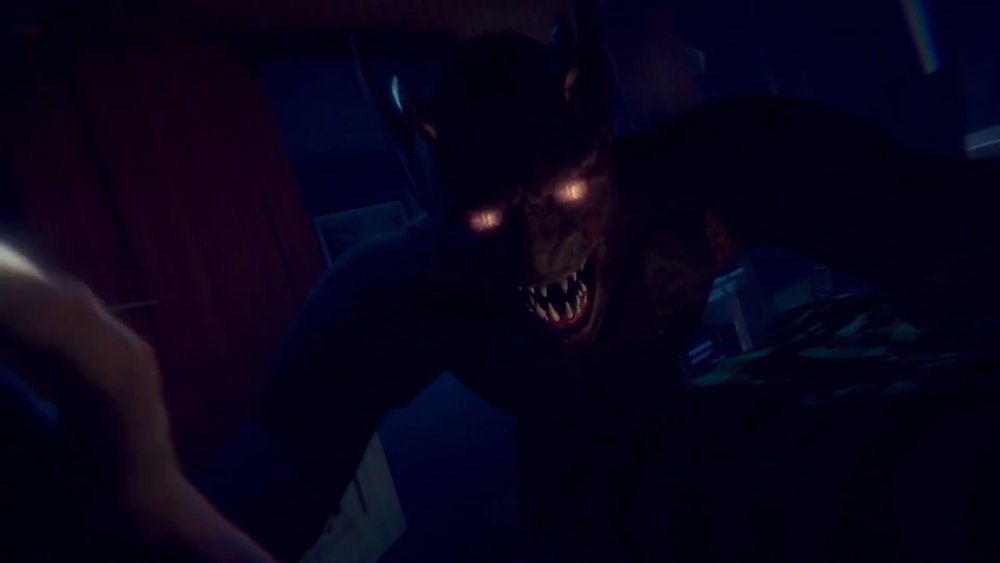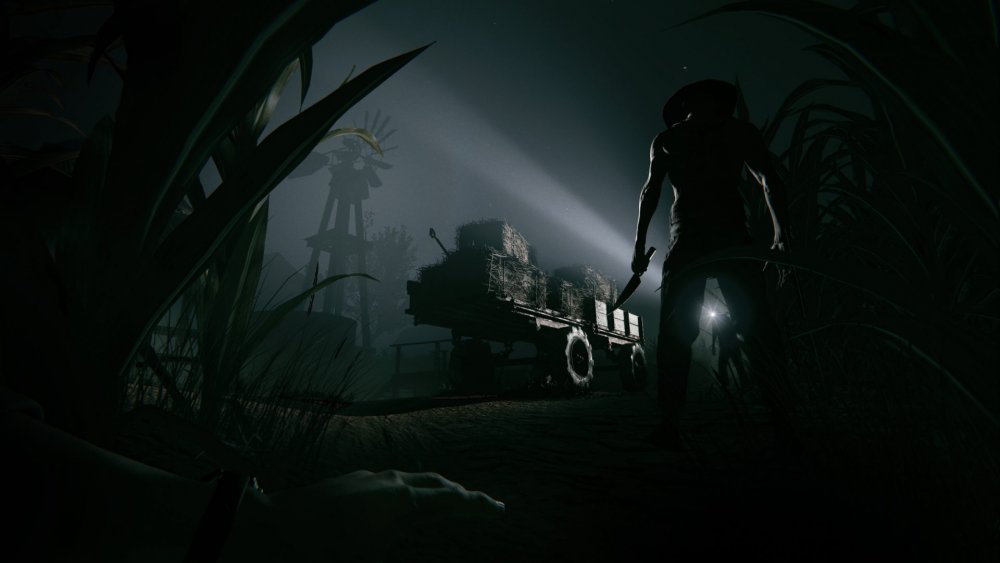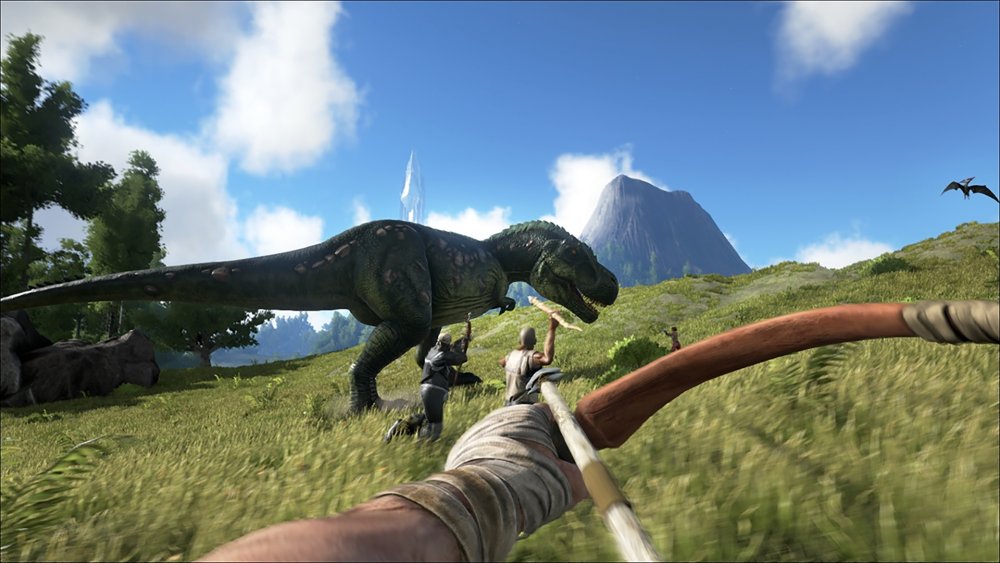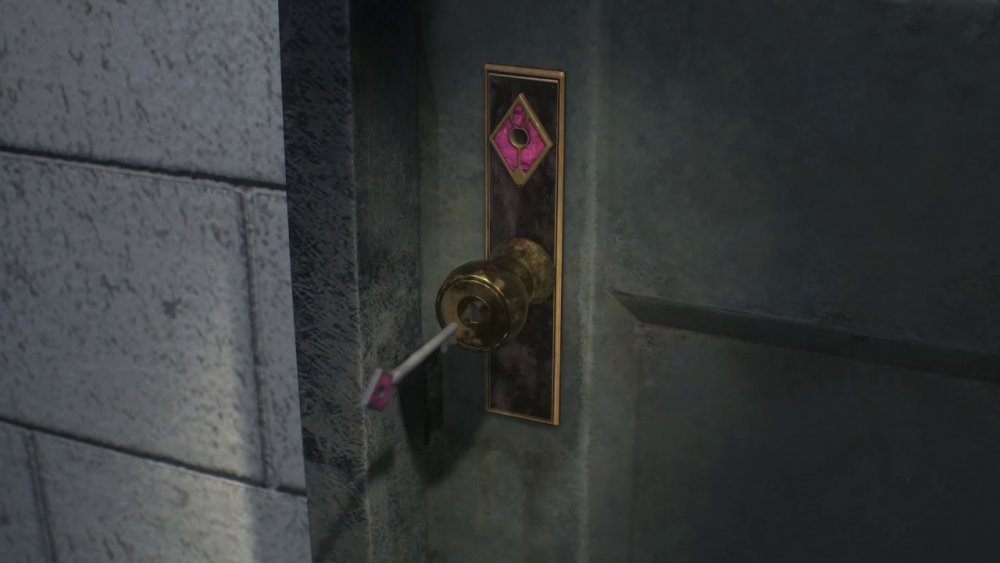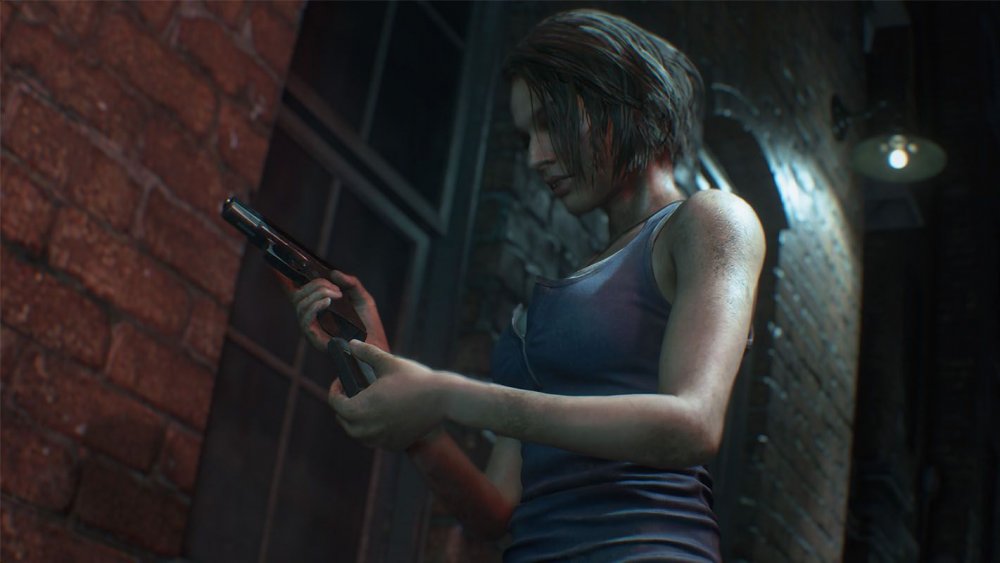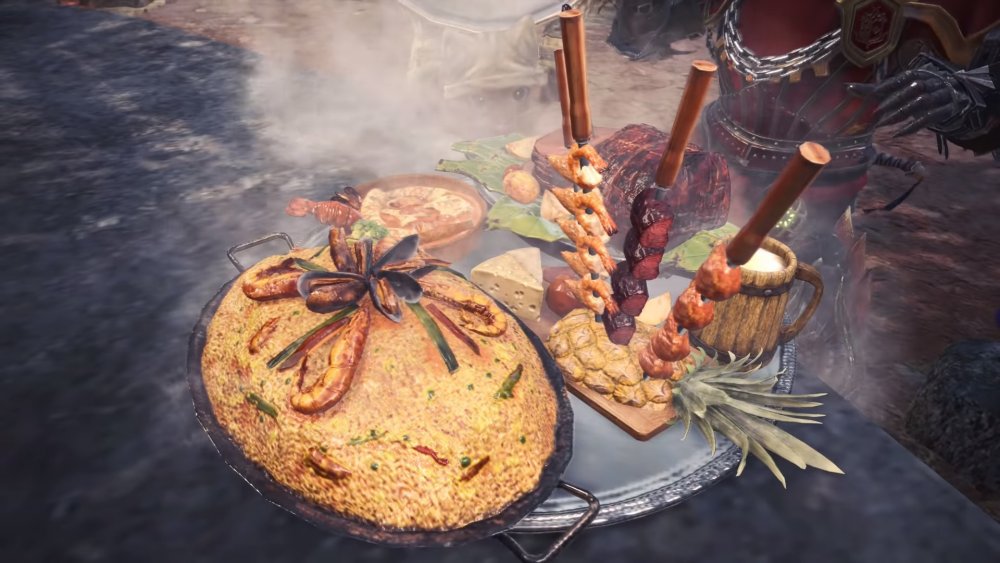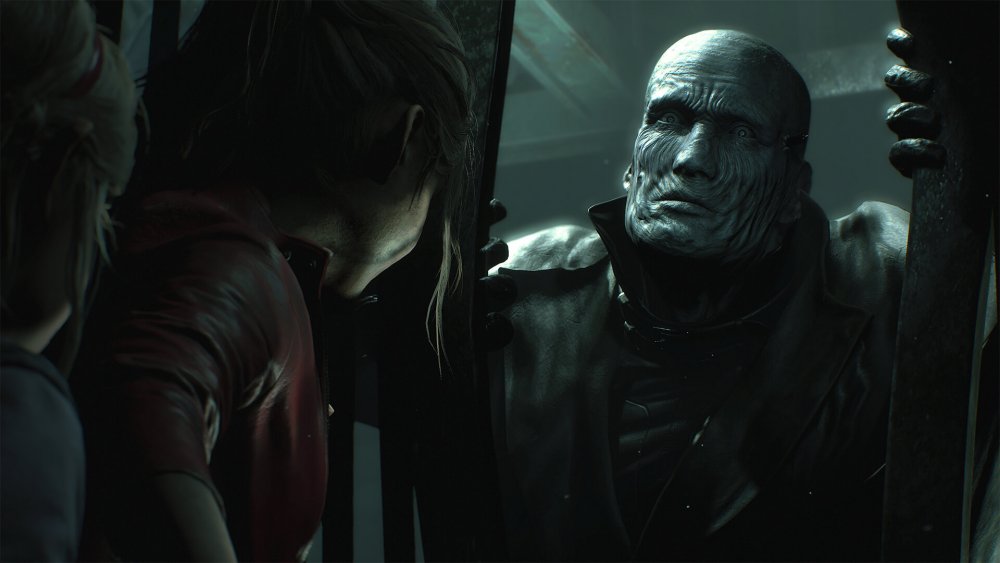Survival Game Logic That Makes No Sense
Survival games pride themselves on an adherence to realism. While other games are power fantasies that let players go toe to toe with dragons, gods, and giant turtles, survival games try to remind gamers they are nothing more than squishy little humans. Reality has a bounty on your head and everything from zombies to your own metabolism wants to collect.
However, while survival games try to simulate your chances of living while lost in the woods or on a deserted island, they are far from realistic. These games don't let players defy the laws of physics by jumping in mid-air, but they still contain instances of game logic that disregard common sense. After all, if survival games were too realistic, nobody would play them.
You can't escape real life if it stares you in the face from behind a screen, so take a look at some ways survival games are less realistic than advertised.
Slam two rocks together to make a gun
You won't last a week in a forest unless you create shelter, and you certainly won't survive a zombie apocalypse unless you MacGuyver ways of keeping the walking dead out of reach. Man invented fire and the axe, and while survival games feature those crucial inventions, they usually leave a few important steps out of the process.
Take the Resident Evil games. To craft bullets, you mash some gunpowder together. But what about essential components like bullet casings? Who needs them! Gunpowder plus gunpowder equals bullets. If you want acid grenades that burn enemies, just combine gunpowder with different colored gunpowder, no actual acid necessary.
Other survival games aren't much better. ARK: Survival Evolved has many crafting recipes, but they are all simplified. Want a stone hatchet? Just slam any old thatch, rocks, and sticks together. What about a metal sickle? Animal hide, wood, and metal ingots — no shaping or tempering necessary.
In Minecraft, you can arrange sticks and rocks in a t-formation to craft a pickaxe, which is forgivable since magic exists in-universe. ARK doesn't have that luxury, even though it features dinosaurs as a selling point.
It's only a flesh wound
Marines often say, "pain is weakness leaving the body." But, pain is also a natural response to alligators eating your legs. Furthermore, pain is debilitating and can overwhelm all other senses, including those necessary to survive animal attacks. Video games have yet to wrap their heads around this concept.
Characters in video games can survive bullets, stabbings, and conflagration. While protagonists usually scream in agony, they keep fighting as if they only suffered paper cuts. This bad habit continues into survival games. Sharks can tear apart legs, and zombies can rip out necks; yet these wounds will never stop game protagonists. In fact, even though literally every other NPC can contract the zombie plague and treats zombie bites as a death sentence, protagonists rarely worry about turning into the undead thanks to good old plot armor.
Some survival games are worse than others. The Dead Space franchise, for instance, is full of space zombies that snack on necks and melt faces with caustic stomach juices. Each attack damages the protagonist's health, which implies it punctures his space suit. But, whenever he ventures into the cold, unforgiving void of space, his internal organs don't escape into the vacuum. The suit works perfectly, despite being shredded several minutes previously.
No matter how you slice it, video games just can't portray wounds realistically.
Broke your arm? Roast chicken will cure that!
Why do we eat in real life? Because food gives us energy to continue living. Why do we eat in survival games? Because food magically mends broken bones and cauterizes wounds.
Most video games, especially survival games, simplify the state of living into health points. As long as you have more than one HP, you're fine, but once you reach zero, you're either out cold or dead. And in these games healing items come in all forms, including food.
It doesn't matter if you lost health in a survival game because you broke your leg or took an axe to the head, because anything food-related can immediately fix you up. Roast meat, boxes of curry, and legally distinct bottles of not-Coca-Cola mend all wounds.
In the real world, a nice hot meal makes you feel better after an injury, but recovery is infinitely more complicated. You need sutures to close the wound, antibacterial ointment to prevent infection, and several weeks or months to recover. Food isn't a placebo for injuries, but video game developers still think roast chicken is a panacea.
What you see is often not what you get
A key factor in survival games is stocking up on resources. You won't escape a zombie apocalypse if you don't have enough bullets. In the real world, resources follow the rule of "what you see is what you get," but video games flaunt this rule.
In survival games (or any video game, for that matter), developers can fit only so many assets into allotted disc space. This limitation forces the team to cut corners, which is why in-game resources are usually represented by universal assets. However, this can result in disconnects, such as when you find a cache of ammo boxes, complete with numerous unspent bullets strewn about the floor.
A cursory glance at the boxes lets you estimate that you will receive somewhere in the ballpark of 200 bullets, give or take the bullets on the floor. You approach the ammo cache expecting to fill your pockets, but you only walk away with two bullets.
How come? The boxes should have contained 200, not two. Even if you only collected the bullets on the ground, you still would have received around 30. Are most of the bullets illusions? Some vile sorcery is behind this.
Who keeps moving my storage boxes?
Many survival games impose strict inventory limits.You can only carry so many items at once before your pockets rip or you develop a hernia. To prevent this, developers implement storage boxes so players can deposit unneeded items for later. However, these storage boxes aren't subject to the game's laws of reality.
In titles like Resident Evil, players can store countless items in item boxes, which creates a game of inventory maintenance. To solve a puzzle that requires special items, you have to make room for them by emptying your inventory into an item box and crawling through zombie-infested halls with limited ammo and healing items. Once you solve the puzzle, you are rewarded with a new location to explore ... complete with an item box that houses all your stashed ammo and healing herbs. Wait, what?
How did everything in one item box teleport to the new one? Are they connected via pneumatic tubes? Do an army of helpful zombies lug the box around? The games hold no answer, and they make you wish real world boxes worked the same way. Imagine how much easier moving to a new state would be if you could store all your belongings in a giant locker, visit a similar locker in a new city, and retrieve everything from there.
Punch rocks and trees to harvest resources
In survival games, you need to graduate from tools made of wood and stone before you can use metal tools and eventually laser drills and jetpacks. But, how do you find enough rocks and branches to create stone tools? In the real world, you scour the ground for rocks and fallen branches, but in survival games, you just start punching stuff.
In survival games, the term "resource gathering tool" is a misnomer since you don't actually need them to collect resources. Tools make the task faster, yes, but you can still fill your pockets full of stone and wood by punching rocks and trees. Creatures with tough hides can hurt you when they attack, but if you hit something stronger than bone in survival games, you're okay because bloody knuckles don't exist.
If you tried to punch rocks and trees in real life, you would need a quick trip to a hospital, which is in short supply on deserted islands.
Antidotes don't work that way
The poison status effect is the bane of video gamers everywhere, especially survival game enthusiasts. Players hate watching health tick down as characters' insides are boiled alive by digital venom. To prevent these game-ending scenarios, players usually carry a small pharmacy's worth of antidotes. What kind of antidote? A generic, cure-all variety that eliminates all forms of poison. If you're a physician or have any medical training, the last sentence probably angered you more than your college organic chemistry test.
The dark little secret about antidotes is that in reality, each poison works differently, so different antidotes are tailored for different poisons. Snake venom, for instance, prevents nerve cells from sending signals to and from the brain (which is why it is called a neurotoxin), creates blood clots, and attacks muscle cells; while spider venom liquifies organs and also includes some neurotoxins. Since the mechanics and chemical makeup of poisons differ, you can't use an antidote made from spider venom to cure a snake bite and vice versa.
However, in video games, poison is poison regardless of its source. All poisons work the same way and are cured the same way. It doesn't matter if you were attacked by a lionfish or mutant scorpion in a survival game since both will slowly kill you, and your only cure is a generic antidote. You don't even need to milk the creature, just pick up a random blue flower that counteracts all poisons and doesn't exist in reality.
Beds are magical safety blankets
When you were a kid, you probably thought a monster lived in your closet or under your bed. You also likely thought your bed sheets provided a magical anti-monster defense matrix that protected you while you slept. In reality, beds and bed sheets don't guard you when you're asleep. Someone forgot to give this crucial bit of information to the game devs who program beds in survival games.
Beds are a crucial part of survival titles since they advance the in-game clock and help the protagonist regain stamina. However, many game beds also prevent monster attacks. That zombie banging on your door? Sleeping fills its rotting brain with the urge to leave you alone and give you a good night's rest. When you wake up, the zombie will have magically disappeared.
In reality, sleeping is as dangerous as it is necessary. You are completely unaware of your surroundings, so any predatory could sneak up and eat you before you have a chance to wake up and defend yourself. Your bed safety blanket is only good for keeping out the cold, not carnivores.
Goldfish have bigger attention spans
You're sneaking through a haunted building when a ghost materializes before your eyes, twists their head like an owl to look at you, and screams like a banshee. You don't have any weapons, but they have a nasty pair of rusty scissors, so you run away. They chase after you and watch you run into a room with no exits, but suddenly they can't find you. So, they give up and walk away — even though you are clearly hiding in an obvious locker — because object permanence is beyond their comprehension.
Attention spans are the Achilles' heel of enemies in survival games (or any game with stealth mechanics). They don't know you're an intruder unless they stare at you for five seconds, and they don't understand how to check obvious hiding spots. Plus, they give up after a minute of searching. It doesn't matter if you hide from human guards or abominations against nature and hygiene — everyone forgets they saw you shortly after you duck out of sight.
In the real world, that guard would be fired for gross negligence or arrested under suspicion of colluding with the intruder (i.e. you). Hate to break it to you, Hideo Kojima fans, but cardboard boxes aren't the ultimate sneaking tool.
There's no such thing as an endangered species list
The number one rule of wilderness survival is foraging enough food. You need to maintain your energy, so going on a diet won't save you. Moreover, nature is a tightrope walk that balances predator and prey populations, and hunting too much is wasteful and short-sighted. However, survival video games don't force players to worry about such realistic minutiae.
Most survival games throw players a bone — figuratively and literally — by respawning all the resources they need. Everything from deer to branches breed like rabbits. You still need to worry about finding these supplies, but you won't run out no matter how much you try.
Reality is a very different beast. If you run out of animals to hunt, your leftover meat will spoil before you find more prey. You could try to subsist on plentiful berries and mushrooms, but those pose a worse problem. If you run out of berries and mushrooms, you're still out of food, and you need to be doubly sure you have not been not stuffing poisonous morsels into your mouth. You may think you found a delicious morel mushroom, but it might be a toxic gyromitra instead.
Everything in moderation, including moderation.
No key? No entry!
How do you enter a locked room? Your first instinct is probably to find a key, but what happens when you can't find one? If you're a video game character, you resign yourself to never knowing what is behind that locked door.
Unless a video game wants you to enter a specific room, you will never enter that room. Ever. Even if you find a battering ram or a crowbar, you can't open a locked door the programmers want to keep locked. Heck, you could step into the shoes of a burly brawler who can just kick open doors, but that locked door is staying shut permanently — unless you find a specific key that opens it. This design choice is infuriating in games that emphasize exploring every nook and cranny for resources.
Common sense dictates you could open locked doors with tools designed for opening locked doors, but not in video games. Maybe developers don't have enough disc space to make every room behind every locked door explorable, or maybe they want you to stick to their pre-programmed yellow brick road. Either way, you cannot deny the disappointment of having the ability to burst through a locked door like a zombie-killing Kool-Aid Man but never capitalizing on it because of a developer whim.
Your pockets are both full and empty at the same time
In most video games you can only fit so many bits of random stuff in your pockets until they are full. A rock and twig for crafting, a spear for hunting, a roast steak for sustenance, and an axe for chopping wood. That's all the space you have, except not really. If you have one rock, twig, or steak on hand, you can cram as many in your pockets as you want. However, once you want to make another axe, you suddenly don't have enough inventory space, even though you're carrying enough material to craft ten axes.
Survival game inventories follow their own physics. You can carry up to 999 pieces of one crafting item. However, large items do not follow the same rules. Want more than one axe? You need more inventory space.
Weight and size doesn't affect inventory either. You could shove an entire bed into your pocket, and you still have enough room for a hunting bow, five steaks, 50 arrows, and enough twigs and twine to arm a battalion with bows.
RPGs that let characters survive being set on fire and mauled by giant mutant iguanas are more realistic since at least they feature inventory weight limits.
This meal has all the essential nutrients, vitamins, and steroids you need to survive
A warm, delicious meal can make you feel invincible, but don't let your feelings get the better of you. Food doesn't make you actually invincible, no matter what survival games tell you.
While food fulfills the crucial role of healing items in survival games, many food items also buff your stats. A special tartare turns your normally weak punches into powerful pistons of destruction, while downing a bowl of cactus juice makes you better acclimated to hot environments. These are, of course, unrealistic.
You want to punch harder in real life? Hit the gym, and you will see improvements in several weeks. Want to do better in the heat? Wear lighter clothes and drink more water.
Magical food that instantly makes you stronger is an insult to survivalists, especially if you chug beer to protect yourself against the cold. Beer doesn't actually insulate you, it just makes you less capable of feeling cold, which is more likely to kill you in cold weather than save you.
Zombie-proof windows and Tyrant-safe doors in your safe space
In most forms of media, zombies are an unstoppable tide of rotting flesh that scramble over themselves to eat your brains. Nothing can halt their inexorable march forward, and even the sturdiest of safe houses eventually crumble. Video games are the exception to the rule since developers don't want to stress players out too much. Usually.
Games like Resident Evil are packed with zombies and other virus-mutated monstrosities. If you can enter a location, even if it has a puzzle, odds are a zombie waits in a long-forgotten corner. Furthermore, players learned the true meaning of fear in the Resident Evil 2 remake when Mr. X started chasing them throughout the game. But, even though this Tyrant can dead lift helicopters one-handed, the flimsy wooden doors of the game's safe rooms are too much for his prodigious strength.
Even Resident Evil 3's titular Nemesis is allergic to entering certain rooms. He's a Tyrant on steroids, but safe room doors are beyond his capabilities. He can't even enter a simple toy store. Sure, Nemesis can lurk menacingly outside, but if you visit the toy store, he's hit with the uncontrollable urge to stop chasing you, even though he's literally designed to never stop chasing you.

